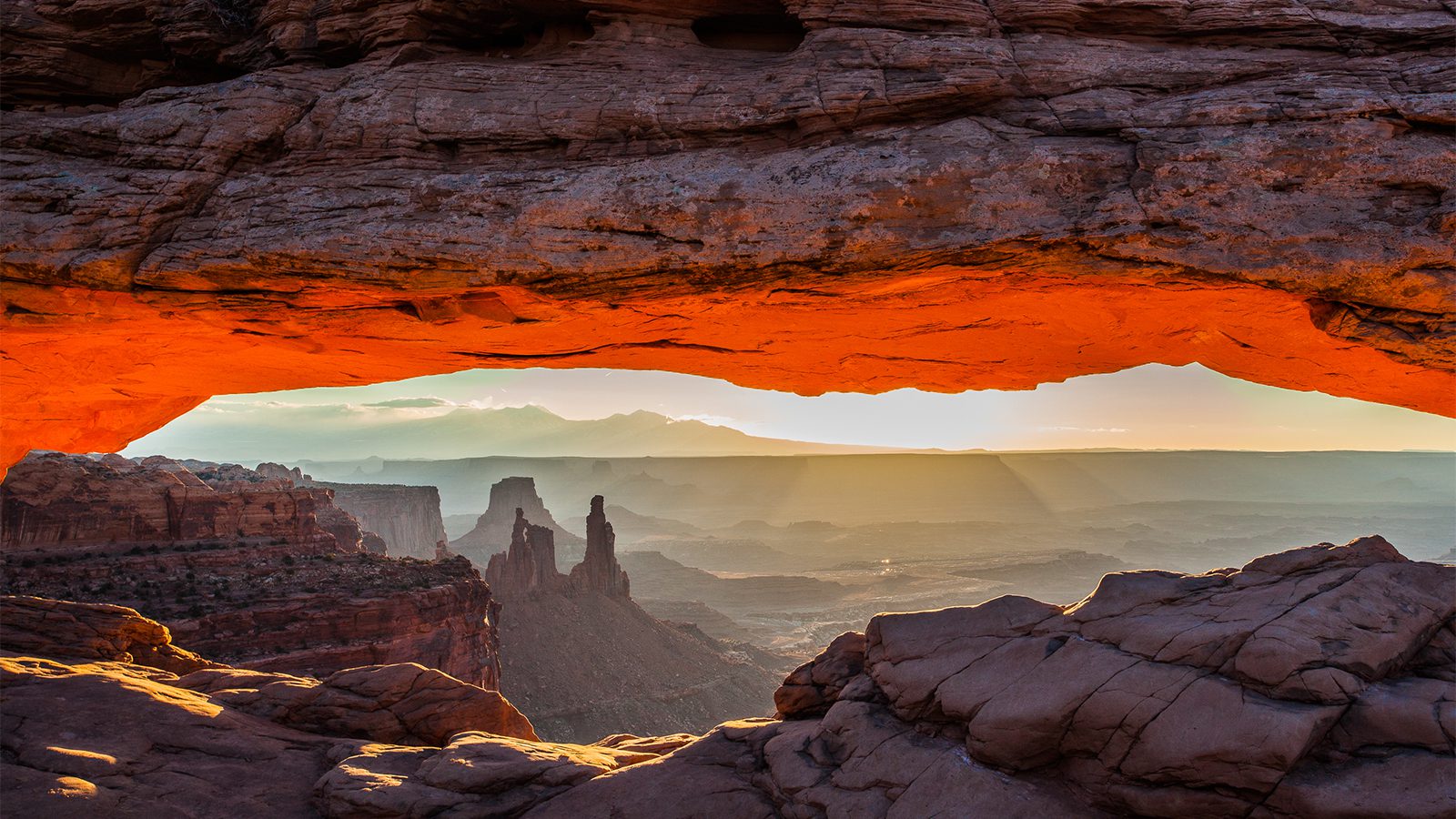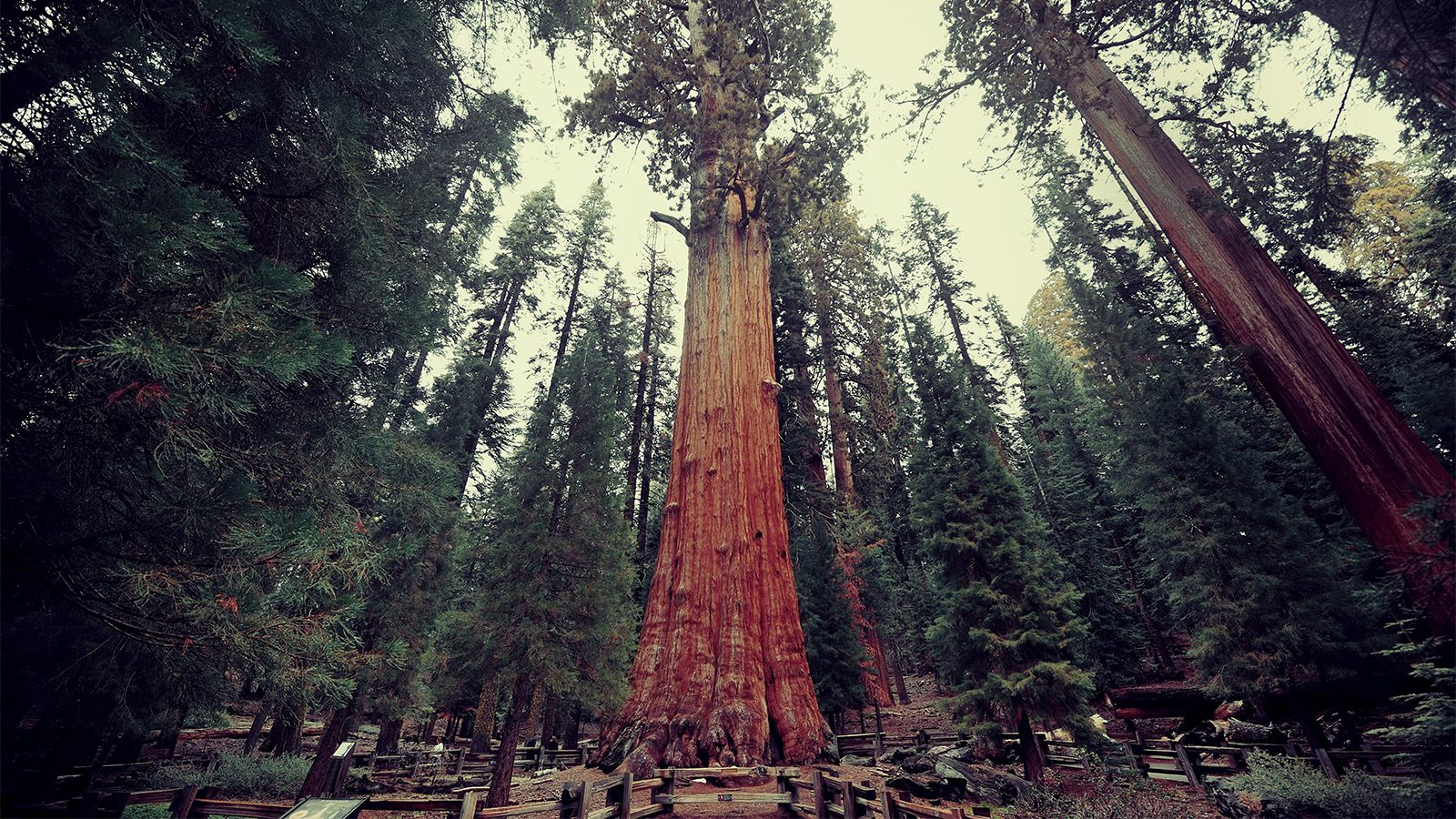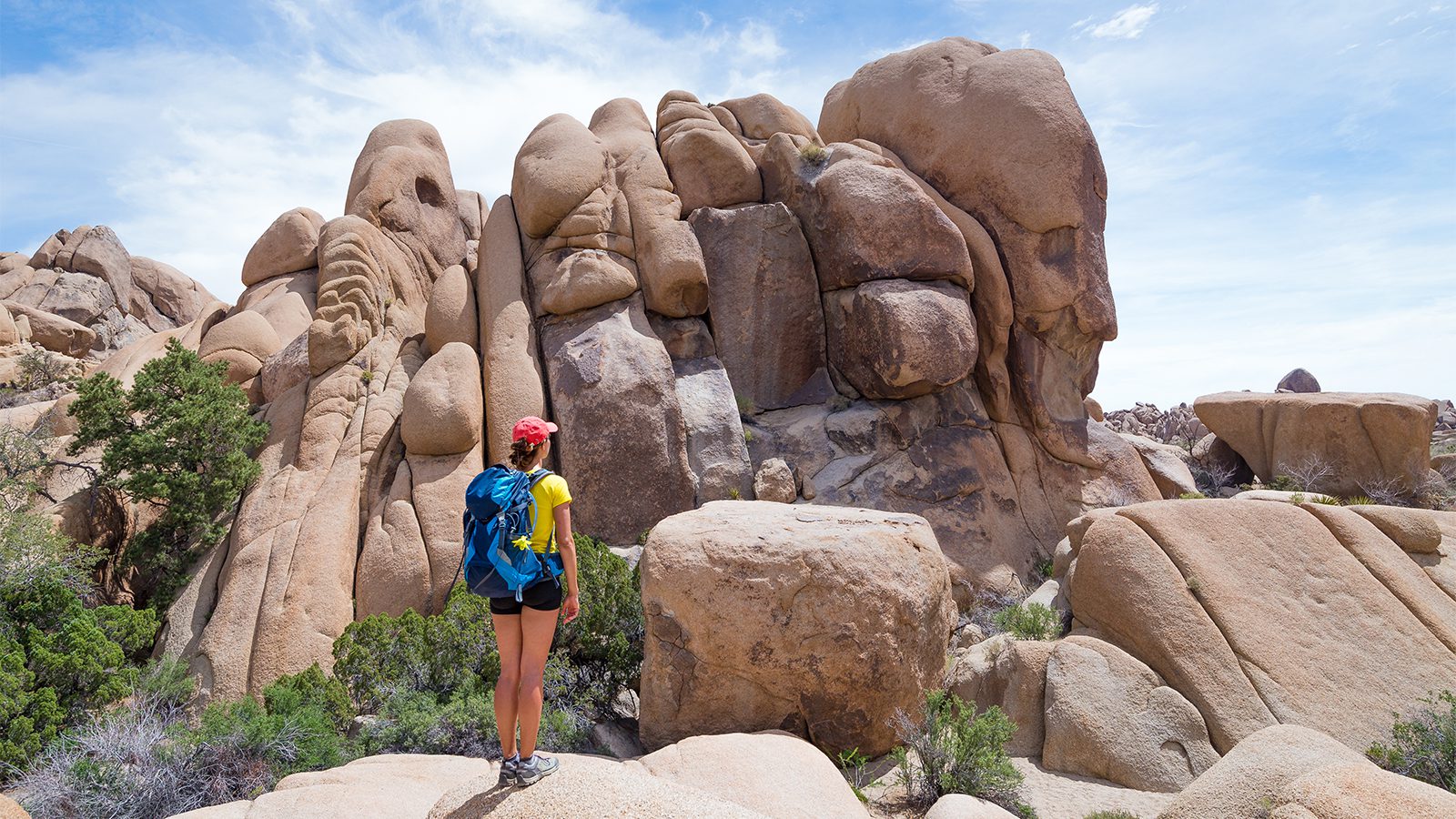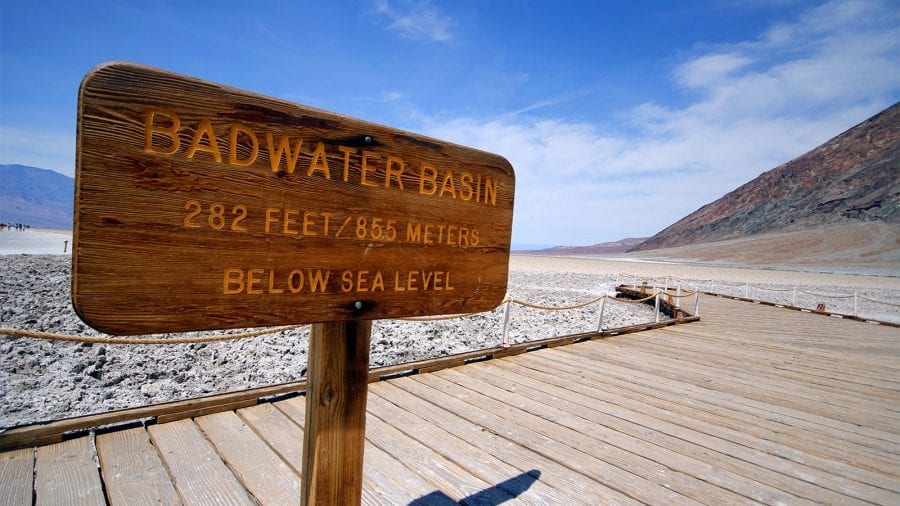
From Death Valley National Park’s extreme heat at Furnace Creek to its cooler high elevations at Charcoal Kilns, to its super blooms of wildflowers in the spring, there is plenty to do in the park regardless of the seasons.
In this article, we’ll cover the top activities to do at Death Valley National Park.
Things to do in summer
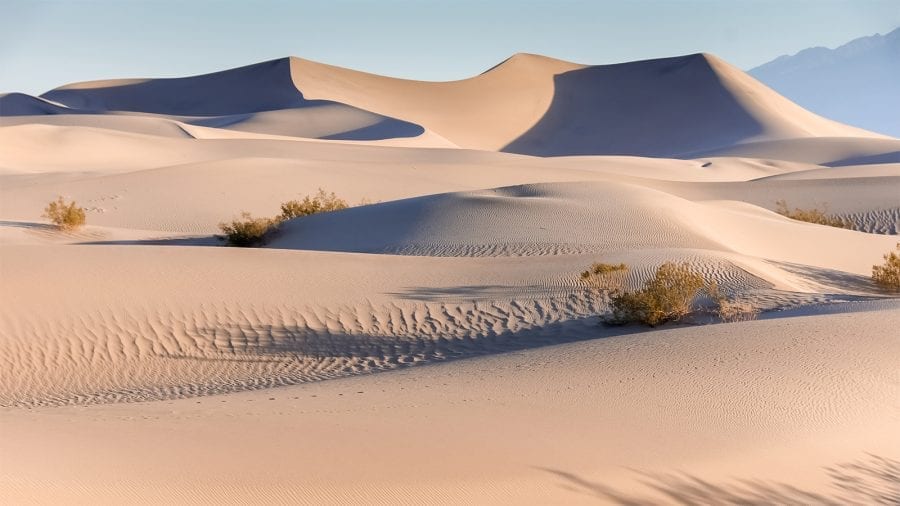
Visit Mesquite Flat Sand Dunes at night
The dunes are far too hot to visit during the day in the summertime, but they reach slightly more tolerable temperatures. It won’t be cool, as temperatures can still hover in the 90s at night, but it’s certainly tolerable.
With Death Valley located more than 100 miles from any city of significant size, there is less surface glow and light pollution. This affords an excellent opportunity to lay on the dunes and star gaze or possibly catch glimpses of desert wildlife, which emerges in the cooler evening.
Experience real heat
If you’ve ever wondered what extreme temperatures are like, then visit Death Valley in the summertime. Highs during the day in mid-summer will eclipse 120 degrees in the idle of the summer.
There are few places on the planet where you can experience what that kind of heat really feels like. Death Valley is one of those places. To know just how hot your experience is, go to Furnace Creek Visitor’s Center, which has a large outdoor digital thermometer.
Just make sure you come prepared with a full water bottle or, even better, a hydration pack. And, don’t venture too far from a shelter as this kind of heat can be quite dangerous.
Head to the high country
Not all of Death Valley is down in the sweltering heat. Head up Emigrant Canyon Road to the Wildrose area, where you can view the Charcoal Kilns among the Pinyon pines. At elevations of nearly 7,000 feet, you can find relief from the heat below.
Temperatures hover around 75ºF in the daytime, a far cry from the 115ºF down in the salt pan. Hikes at this elevation take you to Telescope Peak or Wildrose. You can also camp at these elevations at Thorndike or Mahogany Flat campgrounds. Just be sure to pack a sleeping bag, as camping at these elevations can be much cooler at night.
Things to do in fall
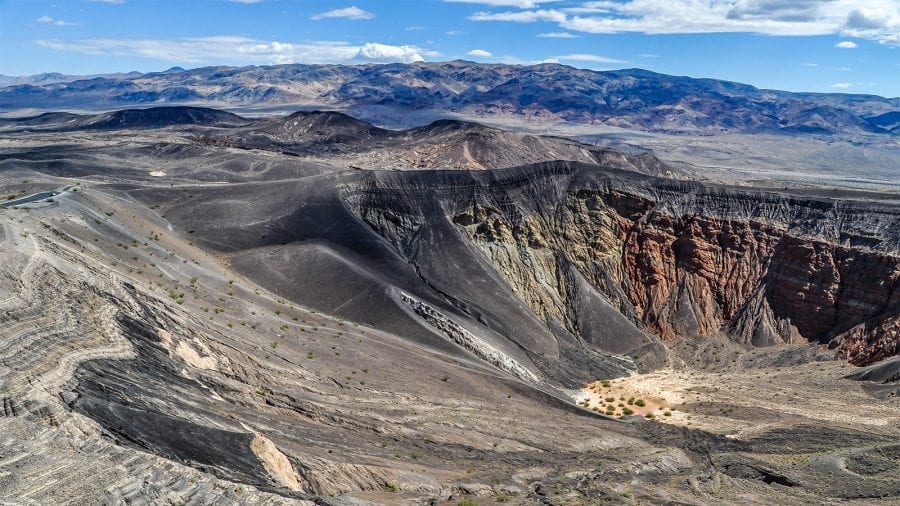
Hike the rim of a volcano
Fall is a great time to visit Ubehebe Crater, which is some 600 feet deep and a half-mile across. It’s too hot to hike the crater in the summertime, but fall offers much more comfortable temperatures for visiting this attraction.
You have three options for exploring the crater. Hike half half-mile trek to the bottom, which is steep, making the return hike difficult. A better option is to hike the rim of the crater, which is about a 1.5-mile trip. You’ll get great views of Ubehebe and several smaller craters, including Little Hebe.
Go for a hike
It’s still quite hot in Death Valley in the fall, but it’s cool enough and safe enough to take hikes in the salt flats. You’ll still probably want to go in the morning or evening and avoid the middle of the day, which can still reach some pretty high temperatures.
And, as always, bring plenty of water bottles. Popular hikes include Badwater Salt Flat, Mesquite Flat Sand Dunes, and Natural bridge. Just keep in mind that this is a popular time in the park, so plan your visits on weekdays if possible.
Drive Down Badwater Road
Badwater Road is one of the most famous routes through Death Valley and autumn presents a great time to travel it. This 45-mile route through the park hits some of Death Valley’s top attractions including Artist Palette, Devil’s Golf Course, Natural Bridge Canyon, Mushroom Rock, and Badwater.
The road is the easiest way to experience Death Valley, especially for those who don’t have a lot of time in the park. Just keep in mind that all of these attractions make this a fairly busy road, so be prepared to face crowds at some of the more popular stops.
Things to do in winter
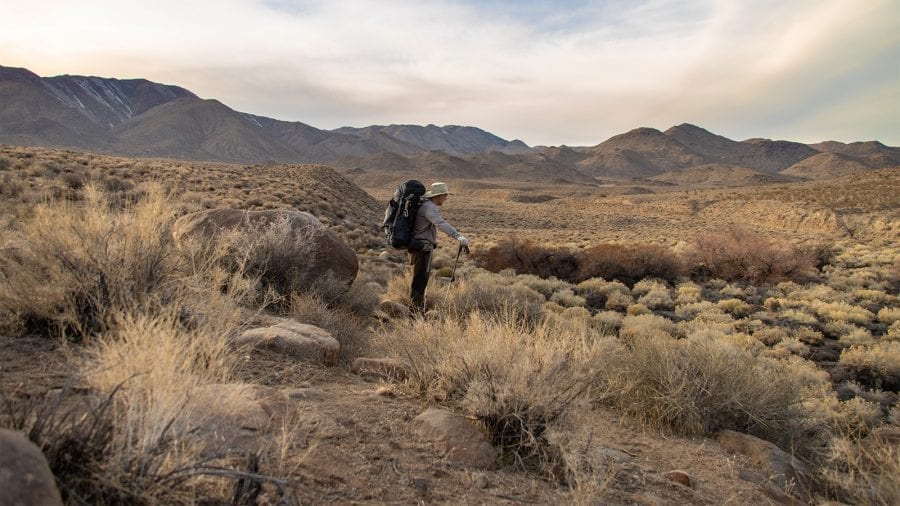
Go hiking
This is by far the best time of year to hike in the park. It’s far too dangerous in the summer and even during the shoulder months, fall and spring, you need to be wary of midday temperatures.
With highs hovering mainly in the 70s during the day in midwinter, you can hike without the worry of dangerous heat. Trailheads for the park’s most popular trails are along Badwater Road, including the popular Golden Canyon hike and the less crowded but just as scenic Desolation Canyon hike.
The terrain is fairly easy, but you’ll still want a pair of light hiking boots to handle these treks.
Read More : What Should I Bring for A Day Hike?
Play golf
One of the most surprising attractions at Death Valley National Park is its golf course. Yes, the driest place in North America actually features a golf course, and the best time to play this course is in the middle of winter.
This golf course uses irrigation from natural springs to keep its greens and fairways green. It’s the world’s lowest elevation golf course at 214 feet below sea level.
This course is far from a novelty. In fact, it’s listed as one of the toughest courses in the country, so make sure to bring your A-game as well as your golf clubs with you.
Go camping
Warm days, cool nights, and smaller crowds; what better recipe is there for camping at a national park. While camping in other national parks in the winter is only for the truly hardy camper, this season is the best time for camping in Death Valley.
Furnace Creek Campground, unbearable in the summertime is an excellent option in winter. Sunset Campground and Stovepipe Wells Campground are also great options and often have openings for those without reservations.
With the exception of Furnace Creek, all of the park’s campgrounds are first-come, first-serve. Just don’t forget to bring a jacket and plenty of layers as nighttime lows can dip below 40ºF at night at the park’s lowest elevations.
Read More : Tips for Camping in Death Valley National Park
Things to do in spring
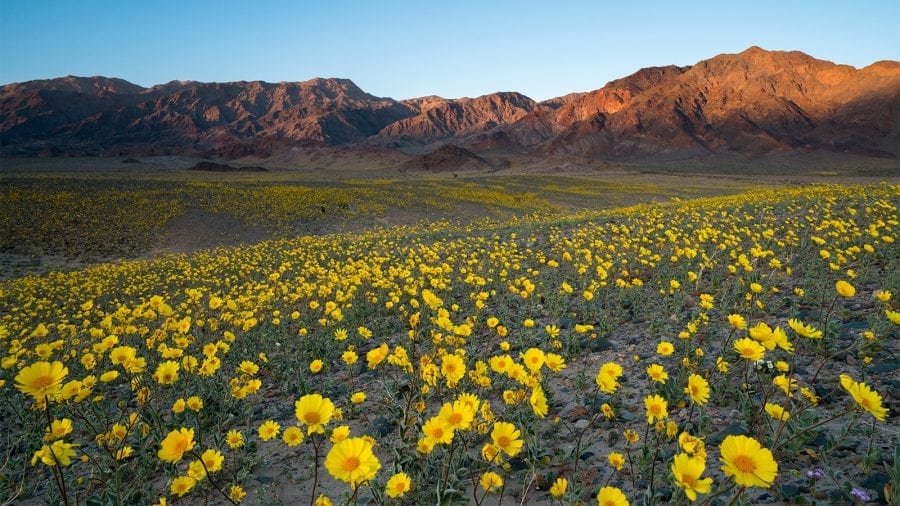
See wildflowers
Given the harsh conditions of the park, fauna is sparse in Death Valley, with the exception of springtime. Death Valley features beautiful spring wildflowers, offering one of the few moments when the park features a wide range of colorful plants.
You’ll have to be patient though as not all springs at the park bring wildflowers. The park’s wildflower bloom is highly dependent on rain. Springs with little rain will see few wildflowers while wetter springs will fill the park floor with bright colors.
The wildflowers won’t last long. Harsh springtime winds typically spell a quick end to these blooms, so you’ll need to be vigilant if you plan on viewing the park’s springtime vegetation by checking the park’s wildflower forecast
Stay at a resort
While camping in the springtime can be unpleasant as springtime winds will kick sand into the air, the season offers an excellent time to stay at one of the park’s resorts, including The Inn at Death Valley and the Ranch at Death Valley.
Both of these lodging options offer some great amenities, including their natural springs. While these 80-plus degree springs may not be an attractive option in the heat of the summer, they are refreshing in the early spring when nighttime temperatures still drop into the 40s.
These resorts also feature pools, large decks for viewing the surrounding desert, and wood-fireplaces for keeping warm at night.
Take Artist’s Drive
While spring winds that kick up sands can make hiking unpleasant, this is a good opportunity to view the park from the shelter of your car, and Artist’s Drive is an excellent way to do that.
This amazing scenic drive is a one-way road that travels south to north 9 miles above Badwater Road to an amazing view of Death Valley below. It features multiple turnouts that allow you to get out of your car to enjoy the views.
The most popular stop is Artist’s Palette, which features breathtaking colors on the mountainside including yellows, greens, blues, reds, and purples, resembling the palette of an artist.
Things to do with kids
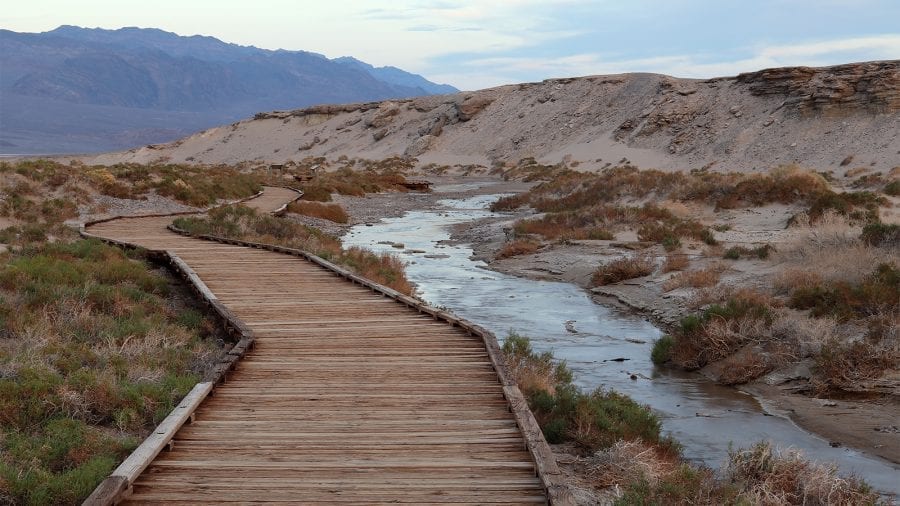
Visit Salt Creek
If visiting the park in the wintertime, which is the best time to visit with kids given the temperature extremes of other months, you’ll want to take a trip to Salt Creek.
This seasonal creek, which is dry much of the year, comes to life in the winter. It’s the only place you’ll find the pupfish, which live for just a few short months in the creek. During this time they busily plant eggs in the creek floor, where they will bake for much of the year before hatching in the wintertime. It’s a great place to teach your kids about nature.
Explore the otherworldly terrain
Locations such as Badwater and the Devil’s Golf Course are an excellent place to take kids. Those who are familiar with Star Wars, parts of which were filmed here, will feel like they’re in the movie.
The bizarre spiky terrain of the Devil’s Golf Course certainly has the feel of a sci-fi film. Your kids will also marvel at how clean the soles of their shoes get after hiking out on to the Borax fields of Badwater (Borax was once the main ingredient in many detergents).
The colorful mountains of Artist’s Way is also a popular attraction for kids.
Hike Sidewinder Canyon
This 2-mile trek through a slot canyon is a rewarding hike for older kids. Some of the slots are so narrow that you can touch both sides at the same time by spreading your arms out wide. The odd shadows and colors created by the light shining through the canyons also make them interesting to explore.
This is an unmarked hike, so make sure to bring a map from the Visitor’s center with you.
Andrew Dodson
Andrew Dodson is an avid camper who enjoys the great outdoors with his wife and two-year-old son. He resides in Colorado, where you can often find him enjoying hikes with a toddler strapped to his back and mini goldendoodle Percy nearby.
